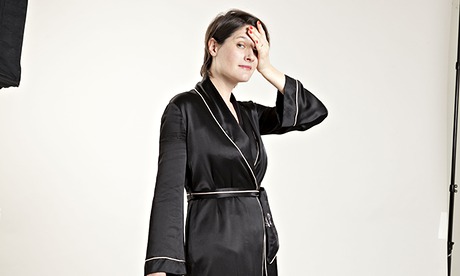
THE GOAL
I've always been bad at night: never slept through as a baby, child sleepwalker, night terrors, got my first prescription sleeping pills – Temazepam – at 17. I've tried self-hypnosis and relaxation exercises, but mainly I either mope about in the wee hours feeling sorry for myself or take any sleeping pills I can get my hands on. Over-the-counter tablets from America, under-the-counter potions from Thailand, I'll try anything. I just want to get a decent night's sleep.
THE METHOD
I used the Sleepio app in conjunction with a Jawbone UP wristband. The band tracks movement and sleep, information that's stored in your smartphone and online in your Sleepio account. It's very easy to use. Wear the wristband to collect data and add any extra explanatory information into a simple online diary along with your subjective experience of last night's slumber. Sleepio analyses it for you.
In addition, I had Sleepio's "clinically proven sleep improvement program", six online weekly cognitive behavioural therapy (CBT) sessions that run through everything from commonsense suggestions about your sleep environment to techniques to counteract the negative thoughts messing with your wide-awake head.
The goal is to improve your "sleep efficiency" (SE), a measure used in sleep studies. In technical terms, it's the total time asleep expressed as percentage of the total time in bed. In real life, it means you aim to spend your time in bed asleep rather than tossing, turning and fretting. There's also an online community to answer questions and offer moral support.
THE VERDICT
The tutorials, conducted by online cartoon avatar the Prof and his narcoleptic dog Pavlov, clearly explained the ideas behind each week's exercises. The tasks were varied but not too time-consuming. They could easily fit into an evening busy with the chores and chaos of cooking dinner, getting a toddler to bed and trying to relax.
While some of the CBT is simple (keep your bedroom quiet and dark and don't drink caffeine at night. Duh), the SE exercises are hardcore. Sleepio records how much time you spend in bed asleep for the first week then only lets you spend that amount of time in bed for the next three weeks. My average was six hours, so during the second phase I had to go to bed at midnight and get up at 6am.
If you wake in the night you have to get up, the idea being that you only associate your bed with sleep. I completed the course during December/January. Don't do this unless your home is well insulated. It was bloody freezing turfing myself out of bed at 3am. But after three weeks, I'd reached 90% sleep efficiency. It wasn't much fun getting there, but once you improve you're allowed to add hours in bed, so normality does return.
I underused the online community aspect of Sleepio because I'm bad at social networking. But from lurking around the forums, I'd say the active members were enthusiastic, supportive and knowledgeable. They certainly know a lot about sleeping pills. I really enjoyed those threads.
Although the routine of sleep efficiency is too hard to constantly maintain, it's a great fallback measure to have learnt for when sleep goes haywire.
Sleepio is user-friendly and it works; it shook up my bad habits and showed me that I can improve without fistfuls of pills. It also helped reduce the twitchy, snappy paranoia that most insomniacs are all too familiar with by making me feel more in control of my nights.

